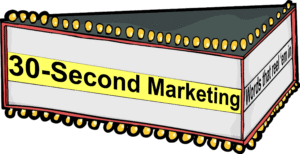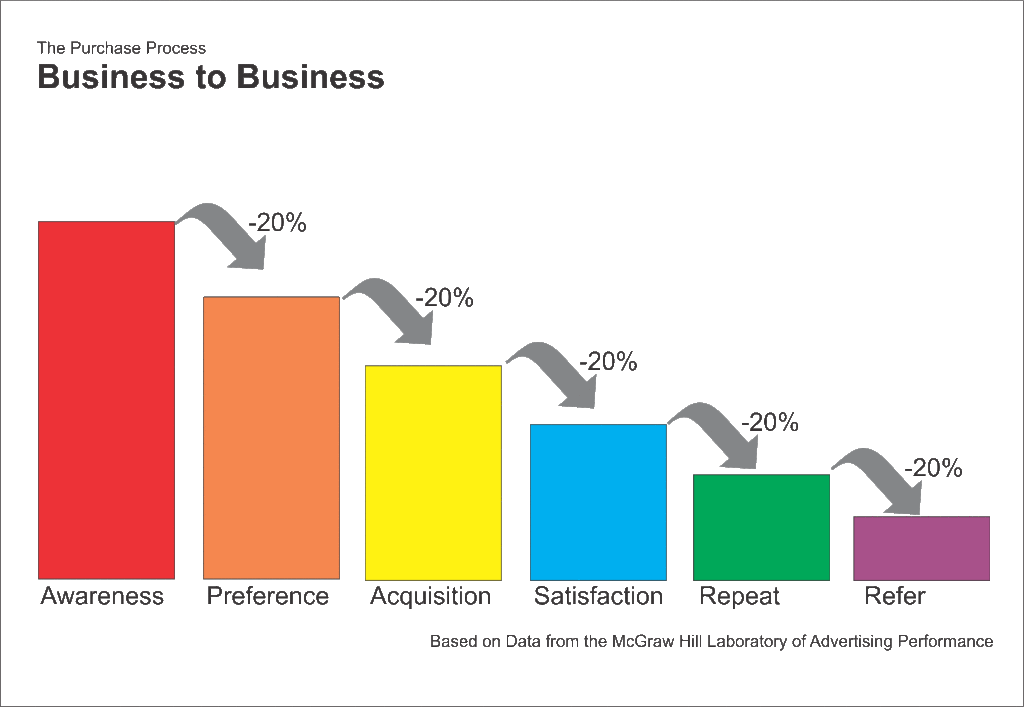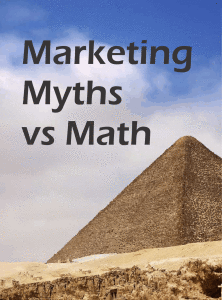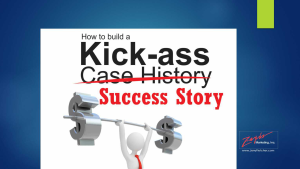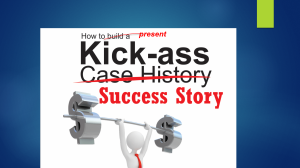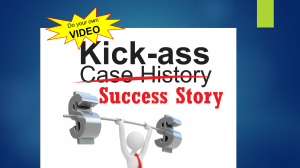I introduced Jim to the group at the Friday Marketing lunch bunch meeting saying, “So we came across each other working on a Chamber committee together. Jim is a video consultant. He provides all the services you need to do personal, product and service videos for use on line or in trade shows or any other way you want to use them.”
I thought you would all like to meet him and might have referrals for him.
Let’s order and then you can start lobbing questions at him.”
Chris apologized for catching Jim with his mouth full and then waved off his words. He said, “I do the digital marketing for a training company. We already produce digital training videos and edit those produced by others for our market. Is there something different we should be doing for product marketing?”
Jim responded, “There is a difference. The rules you apply in a training video are different from those you put to work for you in a product selling video. For starters I’ll bet you want to sell product groupings rather than individual videos. That alone means you have to show or demonstrate how you cover the full range on a subject. More importantly you have to think carefully about who the buyer is. It isn’t the same person you are editing the series of videos for. It is the person that has to manage staff training.”
“Tha’s making sure you’re talkin’ to the right persona,” said Rob, brand guru that hails from the deep south. “And y’all got to understand that when you get the right approach to the Persona they really like your peaches and they want to shake your tree.”
Noting Jim’s confused look Kate, our sales specialist, pushed her dreds back over one ear and said, “Allow me to translate. Bubba mystifies a lot of folks but once you get used to his down home way of pointing out the obvious you can learn from his experience. What he’s trying to say in his grits and syrup style is that if you have a good idea of the person you are talking to you can capture their interest and get them to respond.”
“And that,” said Rick, “is what it is all about. At least that is what I tell my clients as I advise them on their direct marketing needs. I have to admit that video is not something that has been in our wheelhouse until lately. It seems like everyone wants a video approach and I’m beginning to think it is a big part of the answer. It is particularly important in the on line retail arena. But you know me, I’m always looking for statistics. This is what I discovered the other day getting ready for a presentation:
- Retailers who provide online product videos to report that the products with video sell a lot more than products with no video—90% of ’em!
- 75% of business execs in a Forbes survey said they watch a business video on line once a week.
- 80% of folks that viewed a video in an ad remembered it but more importantly over half took action–26% looked for more information — 22% visited the website named in the ad–15% visited the company represented in the video ad–and best of all–12% purchased the product!”
Gail cleared her throat and all of us focused on our writer/editor friend. She said, “What I want to know is how good does an on line video have to be? Do I have to have network quality or will the camera on my Apple computer or phone do? Do I have to have flashy animations and overlays and that kind of stuff? Is there a web site that gives me answers? I could go on but let’s start with those questions.”
Jim looked around the table, took sip of coffee and began, “For starters, stop looking in the rear view mirror. Get a video done! There is no single answer that fits every situation. If you are selling product, you want the best quality you can get for the price.
A little bit of imagination goes a long way like the manual turntable one of my clients came up with to do a walk around of boots and other gear from their outdoor shop. We even did reach in’s to show the soles of the shoes and how a camp stove opened.
Individuals do videos that go viral all the time with their computers. Sure it is mostly talking heads but you can use screen capture programs like Camtasia to make simple Power point animations and then incorporate them with live recording using free editing software. There are a lot of consultants that use that approach, some of whom have been professional editors. There are some folks that say using the video capability of a 35 mm camera gives you the look of broadcast at a much lower cost.
There are two things you need to really think about:
- Sound—you need to get sound that is close up and personal if you use any handheld video recording device.
- Lighting–You need to have good light. A couple lights with umbrella reflectors for shooting inside and at least a reflector panel for outdoors.
If you’ll give me your cards with other questions noted I promise to answer them all… and include them in my Blog.”
Jerry Fletcher’s blog recaps conversations with clients, prospects and the unruly mob of business development professionals he consorts with. They discuss marketing that works from solopreneur to enterprise level. Jerry, sometimes called The Consultant’s Communication Consultant, is the ringleader and “Watson” of the dialogue. Sign up for the blog and other publications at: www.JerryFletcher.com/Profit.html
Jerry has been researching and implementing small business marketing that builds businesses, careers and lives of joy for 25 years as President of Z-axis Marketing, Inc. Learn more at www.JerryFletcher.com
Schedule a personal appearance. Jerry speaks internationally on Networking, Marketing and Contact Relationship Magic. www.NetworkingNinja.com

